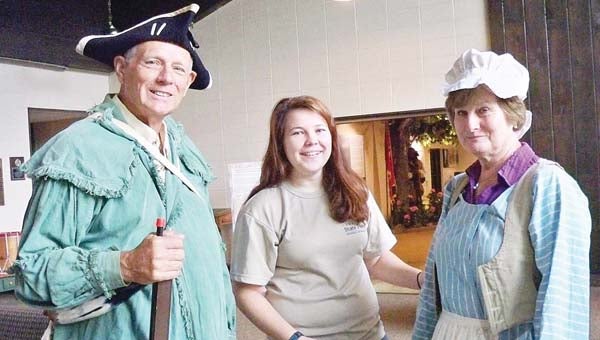Enlightenment: Sycamore Shoals guests learn about 18th century clothing
Published 8:33 am Friday, August 21, 2015

Star Photo/Lynn Richardson
Greg, left, and Sherryl Tucker, right, of Pinnacle, N.C., visited Sycamore Shoals State Park on Thursday, where Seasonal Interpretive Ranger gave them a lesson on 18th century clothing.
Visitors to the area, Greg and Sherryl Tucker of Pinnacle, NC, enjoyed trying on some examples of clothing from the 18th Century on Thursday during a presentation by Seasonal Interpretive Ranger Gillian Roberts at Sycamore Shoals State Historic Area in Elizabethton.
The clothing items on display were replicas of historic pieces, many of them used as costuming for “Liberty,” Sycamore Shoals’ annual outdoor drama.
The Tuckers got to see firsthand how the first settlers of Tennessee dressed. Greg tried on a tri-corn hat, a powder horn, and a hunting frock, while Sherryl donned a shortgown, a petticoat, a bodice, an apron and a bonnet, also called a “mob cap.”
Roberts explained the mens’ hats of the day were pinned up on all three sides to avoid having their hats knocked off as they shouldered their rifles. Hunting frocks were dyed solid dark colors with herbs, insects and walnuts to allow the wearer to blend into his surroundings, much like the camouflage of today.
She also presented examples of undergarments for both men and women called a “chemise,” which doubled for sleepwear. These pieces were pale in color, plain and bleached.
Modesty played a big factor in clothing of the 18th Century, Roberts said, noting that women’s sleeves always covered their elbows and their skirts covered their knees.
However, the length of mens’ pants were the exception to the extreme modesty of the day.
“Mens’ pants were cut off at mid-calf because in the 18th century, one of the most attractive things to a woman was a man’s lower leg,” she said. “In those days, a ‘well-turned calf’ meant a man could guide a horse really well.”




